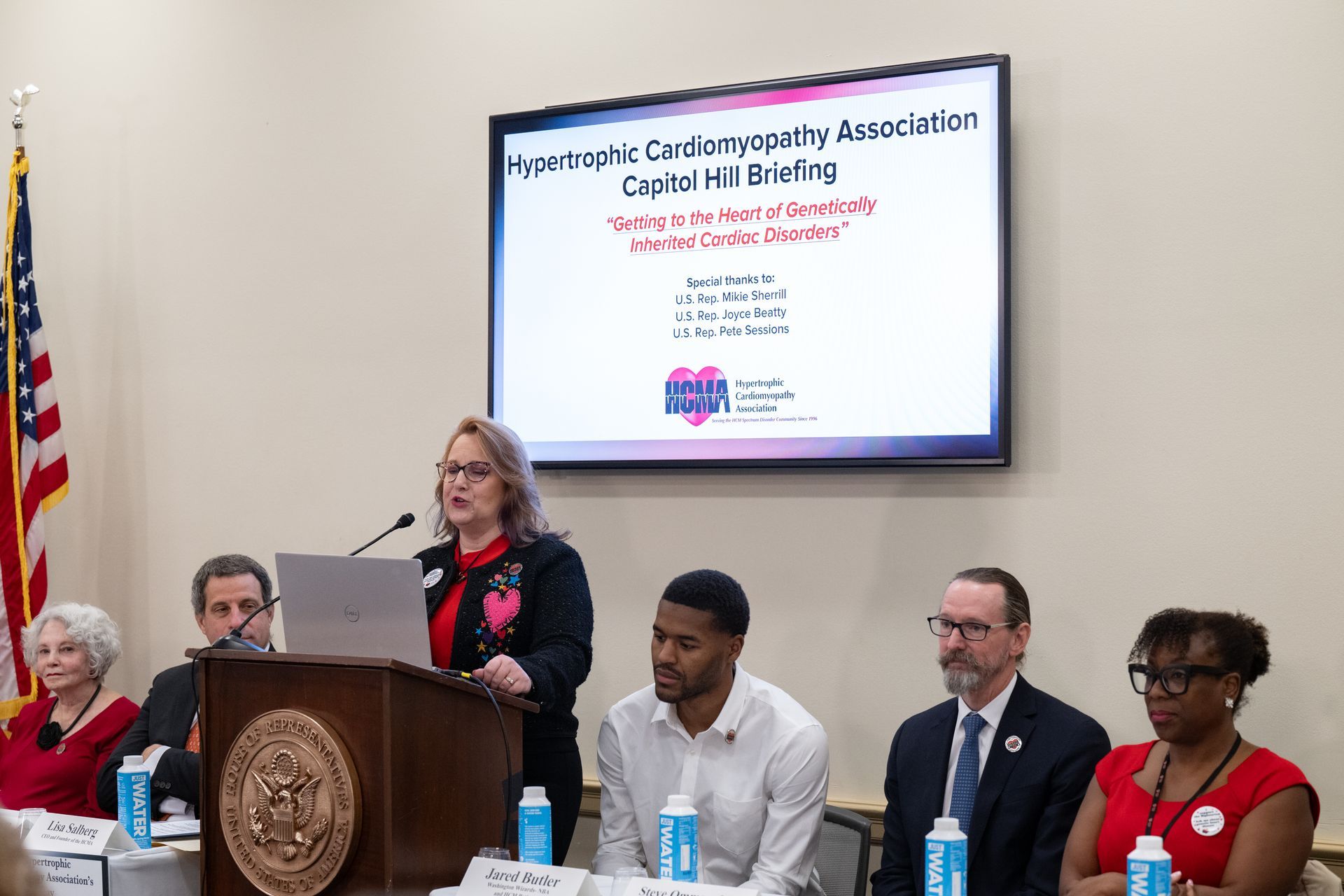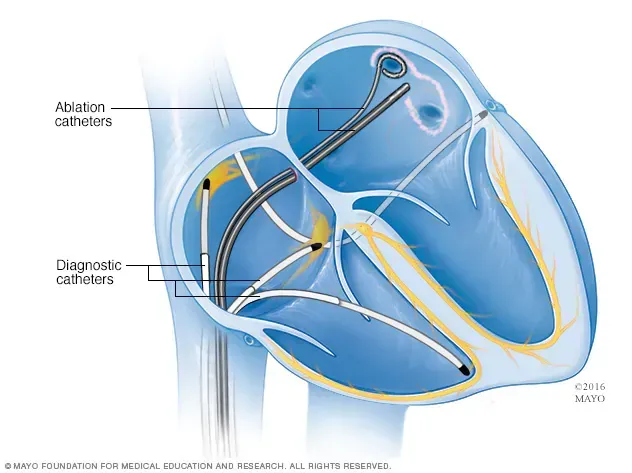Ablations for arrhythmias involve sending a catheter into the heart, and scarring heart tissue to block the electrical signals causing the arrhythmia.
When treatment with drugs does not control arrhythmias it is sometimes possible to treat the arrhythmias with an ablation. This is particularly common for atrial fibrillation and atrial flutter. Electrical signals that cause the arrhythmias start in particular regions of the heart or the pulmonary veins that bring oxygen-rich blood to the heart. In an arrhythmia ablation the doctor accesses the heart using a catheter, and destroys tissue in certain locations. This creates scar tissue that can block the arrhythmia-causing electrical signals.
There are two main techniques: radiofrequency ablation (RFA) causes scarring by using low voltage, high frequency electricity. Cryoablation uses extreme cold to cause scarring.
One point can be confusing: ablations for arrhythmias are not at all related to alcohol septal ablations for obstruction. Both are widely used and have similar success rates and complications. An ablation for an arrhythmia won't treat obstruction, and an alcohol septal ablation won't treat your arrhythmia.
Related Procedures
GOAL OF THE ABLATION
Some people have an ablation and never have their arrhythmia again. That is wonderful, but it is not something you should count on. The goal of an ablation is to reduce the frequency of arrhythmia episodes, as well as their severity. If that is achieved, then you can have fewer symptoms like shortness of breath and fatigue.
Ablations are somewhat less successful with HCM patients than with others, because structural changes in our hearts tend to promote arrhythmias like atrial fibrillation. Some people have ablations for afib several times. Ablation is not generally a cure for arrhythmia. It is a very useful treatment if drugs are not controlling your arrhythmia well.
WHEN IS ABLATION A SENSIBLE TREATMENT?
Drug therapies are the first-line treatment for arrhythmias. Ablation is not usually considered unless the appropriate drug therapies have been tried first. The reason is that ablation is invasive. All invasive treatments carry risks, both from the treatments themselves and from the anesthesia used.
HOW TO FIND A DOCTOR FOR AN ABLATION
Ablations are performed by electrophysiologists. These are cardiologists specializing in heart rhythm problems. Almost any electrophysiologist (EP) will tell you that they can perform your ablation. We recommend that you discuss where to have an ablation done with your main physician at your Center of Excellence. For some ablations - like those for atrial flutter - they may tell you that you can have it done anywhere. Other kinds of ablations - especially for atrial fibrillation - are more complicated in HCM patients. Your doctor may recommend having it done at a Center of Excellence.
WHAT IS INVOLVED IN THE PROCEDURE?
RFA usually takes from two to four hours. Cryoablation may take less time. Before the exam, you will be taken to the lab and given IV sedation. After the medication has taken affect, the doctor will numb an area around your groin and make a small incision. Catheters will be threaded through your blood vessels to your heart. The electrodes at the ends of the catheters will be used to stimulate your heart and find the area causing the abnormal rhythm. The doctor will then use heat or freezing to ablate or "burn"the tissue. This area is usually quite small.
You should not expect to feel pain during the procedure, because of the sedative. After the procedure, you will need to lie still for two to six hours to decrease the risk of bleeding. Lab personnel may also apply some pressure to the site where the catheter was inserted. You will be continuously monitored as you recover. Sometimes patients can go home on the same day as their procedure. It is common to stay overnight in the hospital.
AFTER THE ABLATION
You may experience chest discomfort or bruising in the incision site for a few days after the test. You may also notice occasional irregular heart rhythms. It takes a few weeks for the ablated areas to scar, and so you may actually have an increase in arrhythmias at first. You should contact your doctor immediately if you have unusual/excessive pain, bleeding, or frequent arrhythmias. Most people are able to return to their normal activities in a few days. Be sure to follow all the instructions provided by your doctor. Go to your follow-up appointments. Take your medications on time. Follow the guidelines you are given for physical activity..
RISKS
All invasive treatments carry risks. Bleeding or infection at the incision site are possible. Ablations sometimes damage the blood vessels used to access the heart. They can also damage the heart valves. More rarely, they can puncture the heart. The heart's electrical system can be damaged as well, potentially worsening your arrhythmia. Additionally, blood clots and stroke are possible. Deaths are rare, but they do occur. These risks can be minimized by having a very experienced practitioner perform your ablation. If the practitioner also has a lot of experience with HCM patients, the treatment is more likely to be successful too!
Related Procedures

 Translate
Translate

